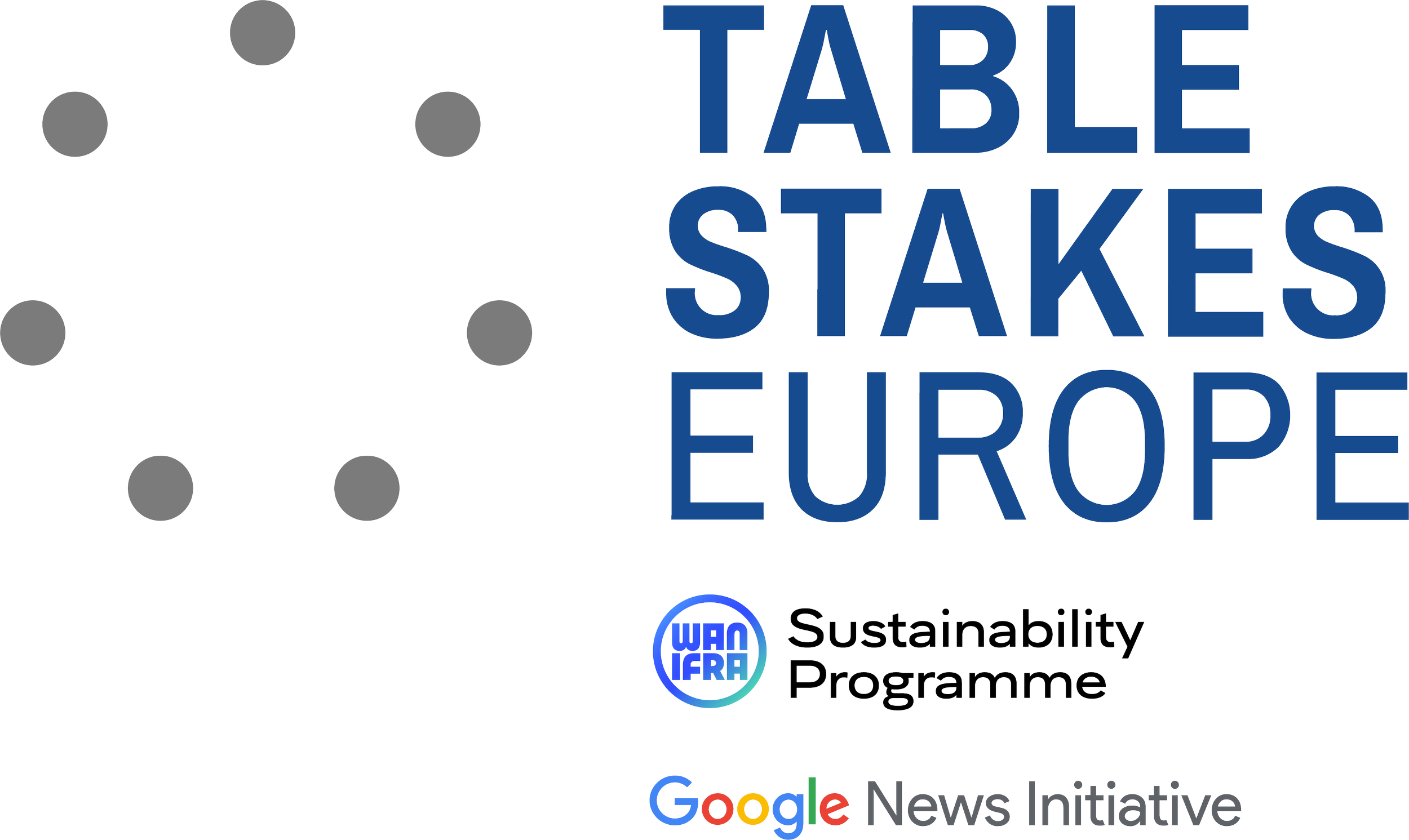4 takeaways on change in local media – from a Table Stakes coach
So I was excited about becoming a coach for Table Stakes Europe, to accompany a few publishers on a very specific change journey, with a clear language and approach, and the back up of reference materials from hundreds of US based publishers.
Nick Tjaardstra with Alexandra Borchardt, fellow Table Stakes Europe coach, during the London session of Table Stakes in February 2020.
I was able to have a ringside seat on major changes in publishers large and small – to see the dedication and belief of the newsrooms, the willingness to learn and develop. New newsletters and podcasts were created within a matter of weeks, and when COVID hit there was an incredible effort to come together and share product ideas at a time when many were furloughed or over-stretched. I worked with one of the oldest newspaper groups in the world, and one that was born this millennium and yet dominates its local region.
So what did I learn as a coach in our first round of Table Stakes Europe (TSE)?
1) We can learn more than we expected from local US publishers
Participants in TSE gained a new respect for US case studies, having previously been fixated on the Nordics. And both the Nordics and the US actually have seen similar heavy consolidation over recent years, with eyeballs moving rapidly to digital and publishers looking to centralise core functions like data management and marketing teams, even print layout. Massive economic pressures in the US, where several of the largest publisher groups are owned by hedge funds like Alden Global Capital, have led to a spirit of innovation and entrepreneurship.
Table Stakes alumni such as the Philadelphia Inquirer and The Seattle Times might not yet be able to fully fund the newsroom from digital revenue, but they are streets ahead in terms of joint work with newsroom and business teams, and the idea of the newsroom as a profit centre, as opposed to a cost that needs to be trimmed. They have also worked hard on how to measure that success. Danny Gawlowski from The Seattle Times joined us for the third workshop in London, and was very open and generous in explaining how they had been round the block a few times on dashboard metrics, before they found a measure that the newsroom could really understand and apply.
2) There are no out-of-the-box solutions – only questions and suggestions, frameworks
While some elements of the Amedia strategy might apply to German publishers, there is no point trying to reach print customers if you have no idea who they are. For example, in the UK the last mile of delivery is undertaken by local newsagents, so very few publishers can actually identify their subscribers. There is also no standard engagement measure. Mittmedia in Sweden already have a significant user base to measure Daily Active Subscribers. But if you just launched and have a couple of hundred subscribers, it might be better to look at time spent per session or newsletter open rates. Our job as coaches is really just to prompt questions, make suggestions, and perhaps refer to other publishers in the same boat.
3) The common language is incredibly helpful
Being able to talk about MPTs (mini-publisher teams) or DVP (Dissatisfaction, Vision, Planning) really helps compare learnings and progress across participating teams, but also to benchmark against the 150+ US publishers that have already been through the process. It’s slightly anglo-centric, but that’s perhaps inevitable – and now our alumni can rapidly exchange ideas and work together without starting from scratch and explaining their own internal naming conventions.
4) Structure is good
This really links to the point above, and is perhaps my biggest takeaway. It’s incredibly hard to define a structure for monetising local news online, when very few companies have successfully mastered it. For some elements, like the customer journey and the cycle of on-boarding and retaining customers from a marketing perspective, I believe we at WAN-IFRA have developed some good models. Yet Table Stakes takes the big picture view, from defining audiences through to monetisation, all based on the input of US publishers who have been under extreme financial pressure over the last decade and forced to innovate.
Whether or not you take part in the programme, it’s worth getting hold of the book by Doug Smith and colleagues Table Stakes: A Manual for Getting in the Game of News This explains the 7 Table Stakes themselves, with helpful checklists and templates for internal planning. Of course it’s no substitute for the full Table Stakes experience, and I’m looking forward to working with all the teams in Round 2!

